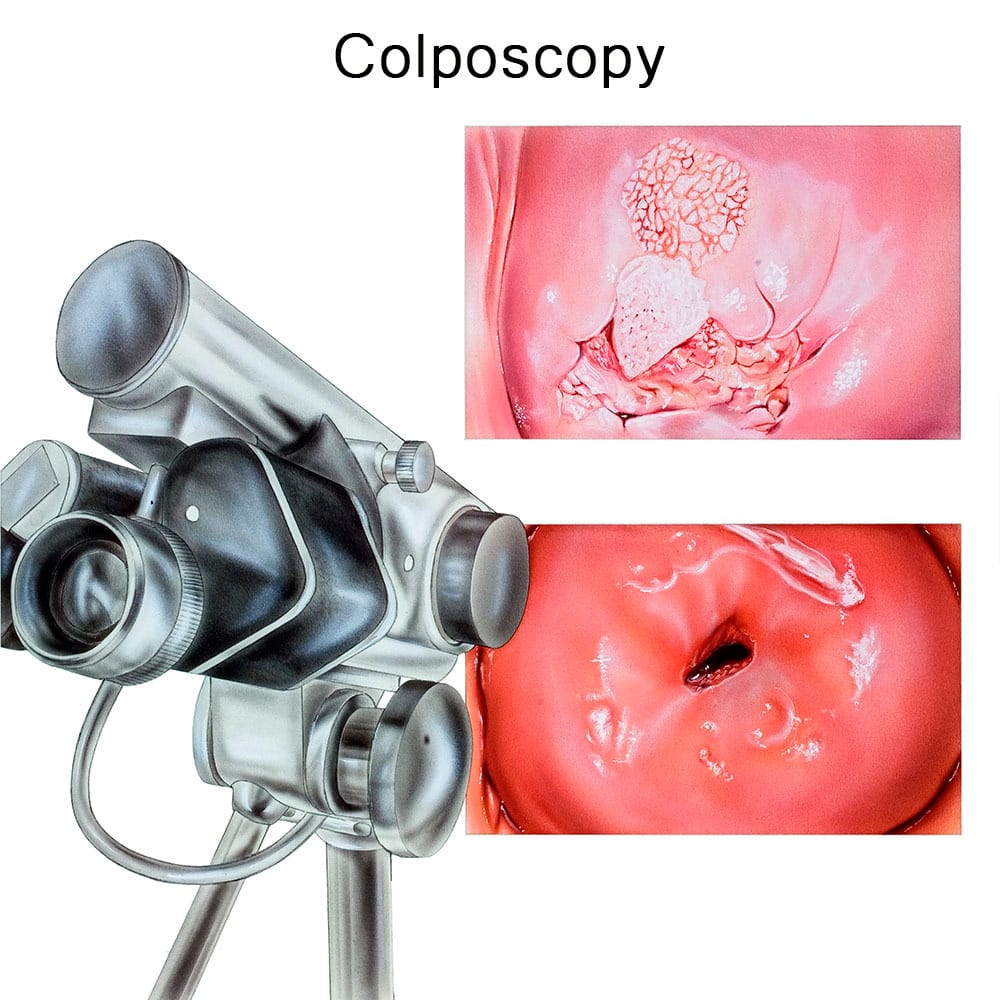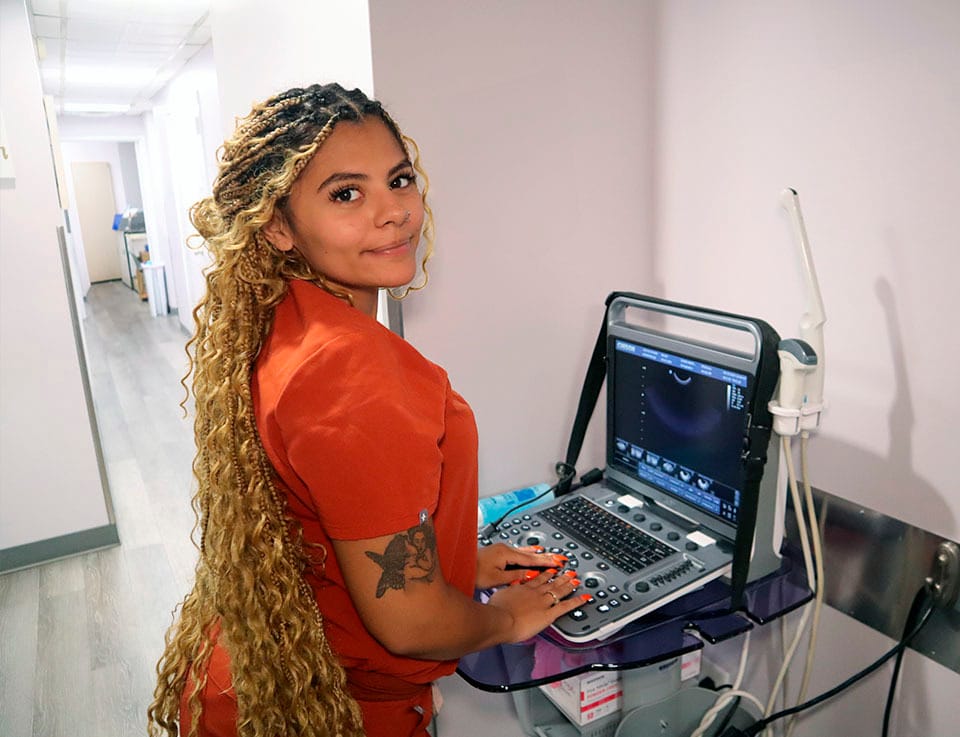What Is a Colposcopy?
 A colposcopy is a procedure that allows your doctor to look closer at your cervix, vagina and vulva using a special device called a colposcope. This is like a magnifying glass that helps your doctor spot any suspicious areas. You might need a colposcopy during pregnancy or following a routine exam if your other tests indicate the presence of abnormal cells.
A colposcopy is a procedure that allows your doctor to look closer at your cervix, vagina and vulva using a special device called a colposcope. This is like a magnifying glass that helps your doctor spot any suspicious areas. You might need a colposcopy during pregnancy or following a routine exam if your other tests indicate the presence of abnormal cells.
When pre-cancerous cells are suspected, your doctor may recommend this procedure to get a clearer view. A colposcopy helps to monitor these cells to prevent the risk of cancer.
Other reasons your doctor may suggest this procedure include:
- Colposcopy for HPV infection with abnormal findings that need further examination
- Colposcopy for endometriosis and other unexplained bleeding or unusual discharge
- Testing for genital warts that need closer inspection to determine the underlying cause
- Checking vulvar or vaginal abnormalities that require a detailed evaluation
When it comes to feminine health and gynecological surgery, expertise matters. At Cohen Medical Practice (CMP), Dr. Felix Cohen specializes in a range of treatments, from pelvic floor reconstruction and routine colposcopy procedures to menopause care and fertility services.
What Should I Do to Prepare for a Colposcopy?
You need to avoid any kind of vaginal products such as tampons, douches, vaginal creams or medications before a colposcopy for endometriosis or any other type of colposcopy. These can interfere with the exam and potentially affect the results. You must schedule the colposcopy when you aren’t menstruating because bleeding can make it harder for your doctor to examine your cervix clearly.
Preparation for colposcopy includes:
- Holding off on sexual activity for at least 24 hours before your colposcopy to ensure your cervix is ready for the exam
- Taking over-the- counter pain medication to ease any discomfort you may undergo, though colposcopy is usually not painful
- Eating and drinking normally on the day of the procedure
If your doctor takes a biopsy during the procedure, you may experience light spotting. A colposcopy is a quick and straightforward procedure, but it’s normal to feel a little nervous. Take deep breaths and relax your body, and don’t hesitate to share your concerns with your doctor.
What Happens During a Colposcopy?
The procedure is straightforward and typically takes about 10 to 15 minutes.
During the procedure, you can expect your doctor to take certain steps that include:
- Positioning. You lie down comfortably on an exam table, with your feet in stirrups.
- Speculum insertion. Your doctor gently inserts a speculum so he can see your cervix. You might feel some mild pressure, very much like a normal routine pap smear.
- Colposcope examination. Your doctor looks at your cervix and vagina through the colposcope. The colposcope doesn’t touch you, it only provides a magnified view.
Your doctor then applies a special solution typically made of acetic acid, which is a vinegar-like solution, to your cervix to spot any unusual areas. If your doctor spots anything abnormal, he may take a small tissue sample and do a biopsy.
What Can I Expect After a Colposcopy?
You should be able to go about your day as usual if no biopsy is taken. If your doctor took a biopsy, you may experience a bit more cramping or light bleeding for a few days. This happens due to the solution your doctor applied during the biopsy. It’s a normal part of your recovery process and clears up soon.
Colposcopy recovery usually goes smoothly but there are some warning signs, which are greatly reduced when you rely on an experienced expert like Dr. Cohen.
Possible side effects may include:
- Heavy bleeding after colposcopy that may cause you to soak through a pad every hour or so
- Severe cramping that doesn’t improve with medication
- Fever or chills
- Foul-smelling discharge
If you had a biopsy, it may take a week or two to receive the results. Dr. Cohen may recommend that you avoid sex after colposcopy for at least a week to prevent infection or irritation during recovery.
What Happens if a Colposcopy Is Abnormal?
When your colposcopy shows abnormal results, it indicates that some areas of your cervix or vaginal tissue look different from the surrounding healthy tissue. Your doctor waits for the pathology report, which usually comes back within a week or two, and then determines whether treatment is needed. Mild changes, referred to as low-grade dysplasia, resolve on their own.
If high-grade dysplasia is found, your doctor might recommend treatment to remove the abnormal cells with options that may include:
- Cryotherapy, which involves freezing abnormal cells
- LEEP, or using an electrified wire loop to remove affected tissue
- Cone biopsy, which removes a cone-shaped piece of tissue to get a full sample
Dr. Cohen, a board-certified obstetrician-gynecologist, leads a trusted and compassionate team specializing in feminine health and gynecological services. They are dedicated to providing expert care for a variety of gynecological conditions from diagnosis to treatment. Contact Cohen Medical Practice (CMP) in New York and schedule an appointment to get personalized care to address your unique needs.

